
15-12-2025 15:48
 Danny Newman
Danny Newman
Melanospora cf. lagenaria on old, rotting, fallen

15-12-2025 15:54
 Johan Boonefaes
Johan Boonefaes
Unknown anamorph found on the ground in coastal sa

15-12-2025 21:11
 Hardware Tony
Hardware Tony
Small clavate hairs, negative croziers and IKI bb

15-12-2025 07:09
 Danny Newman
Danny Newman
indet. Rutstroemiaceae sp. on unk. fallen leavesMc

15-12-2025 07:05
 Danny Newman
Danny Newman
Pseudosclerococcum golindoi (det: Zotto)near Cosb

15-12-2025 11:49
 Danny Newman
Danny Newman
ITS sequences from the following two collections B

15-12-2025 12:34
 Danny Newman
Danny Newman
indet. Rhytismataceae on oak leafnear Purchase Roa

09-12-2025 12:06
 Andgelo Mombert
Andgelo Mombert
Bonjour,Je recherche l'article concernant Hypobryo
cf Calycellina sur Asplenium scolopendrium
Gilles Corriol,
11-12-2012 21:00
 Je tente ma chance une nouvelle fois, ce coup ci avec le genre Calycellina ...?
Je tente ma chance une nouvelle fois, ce coup ci avec le genre Calycellina ...?Récolté sur rachis mort de l'année précédente de Aslenium scolopendrium.
Asques I-, bouclés.
Spores environ 10 X 2,7 µm, cylindriques, lisses, hyalines.
poils marginaux filiformes, crispés, réfringents (?)
paraphyses filiformes.
Ascomes jusque 0,3 mm.
Merci pour votre aide
Hans-Otto Baral,
11-12-2012 21:06

Re : cf Calycellina sur Asplenium scolopendrium
Dear Gilles
This looks like an Unguiculella (incarnatina perhaps, not combined yet), according to the hairs. Regrettably you used Melzer as mountant, or? You see that the spores contain large oil drops which would much facilitate determination. The before-last ist presumably in phloxine, therefore the oil drops are seen.
Are the asci also inamyloid in Lugol? Do the living paraphyses (in water) contain refractive drops?
Zotto
This looks like an Unguiculella (incarnatina perhaps, not combined yet), according to the hairs. Regrettably you used Melzer as mountant, or? You see that the spores contain large oil drops which would much facilitate determination. The before-last ist presumably in phloxine, therefore the oil drops are seen.
Are the asci also inamyloid in Lugol? Do the living paraphyses (in water) contain refractive drops?
Zotto
Gilles Corriol,
22-12-2012 15:21

Re : cf Calycellina sur Asplenium scolopendrium
Thank you Zotto for your answer.
I had a little time to get Lugol (I did not use this reactive).
Sorry for killed material, I will use water next season, promised !
I apology for the next collections from this year I will send, all studied in killing reactives including Melzer.
Yes my previous pictures were taken in Melzer and phloxine.
Ascus are not iodine reactive even in lugol (picture attached)
Joyeux Noël à tous.
Gilles
I had a little time to get Lugol (I did not use this reactive).
Sorry for killed material, I will use water next season, promised !
I apology for the next collections from this year I will send, all studied in killing reactives including Melzer.
Yes my previous pictures were taken in Melzer and phloxine.
Ascus are not iodine reactive even in lugol (picture attached)
Joyeux Noël à tous.
Gilles
Hans-Otto Baral,
22-12-2012 19:38

Re : cf Calycellina sur Asplenium scolopendrium
I am not sure, I see a faint reddish reaction.You can verify this when you put KOH to the preparation (1-2% or more), for some 10 seconds. Afterwards you put a drop of water and try to eliminate the KOH, then you add Lugol again, enough, so that it stain the asci. Possibly you will then get a blue reaction.
see my homepage:
http://www.gbif-mycology.de/HostedSites/Baral/IodineReaction.htm?
Zotto
see my homepage:
http://www.gbif-mycology.de/HostedSites/Baral/IodineReaction.htm?
Zotto
Gilles Corriol,
23-12-2012 18:24
Hans-Otto Baral,
24-12-2012 12:30

Re : cf Calycellina sur Asplenium scolopendrium
Yes, quite distinct though not strong. So it is pale hemiamyloid.
For the spores I don't think they are truly 1-septate. This is a typical artifact due to the presence of large oil drops. It is the nuclear region that is stained and this contrasts with the unstained oil drops.
Now I think your fungus could belong to Urceolella pani, which should perhaps be better transferred to Unguiculella.
Zotto
For the spores I don't think they are truly 1-septate. This is a typical artifact due to the presence of large oil drops. It is the nuclear region that is stained and this contrasts with the unstained oil drops.
Now I think your fungus could belong to Urceolella pani, which should perhaps be better transferred to Unguiculella.
Zotto
Gilles Corriol,
26-12-2012 12:12

Re : cf Calycellina sur Asplenium scolopendrium
Thank you for help.
Were could I find a key of this genus including the latter species ?
I see in your CD that it has also been called Iridinea pani. Is this genus still existing ?
Are there modern keys of genera of Helotiales ?
Thank you in advance.
Gilles
Were could I find a key of this genus including the latter species ?
I see in your CD that it has also been called Iridinea pani. Is this genus still existing ?
Are there modern keys of genera of Helotiales ?
Thank you in advance.
Gilles
Hans-Otto Baral,
26-12-2012 13:05

Re : cf Calycellina sur Asplenium scolopendrium
Good keys are quite wanting for many genera of Helotiales. Iridinea was a suggestion of mine, unpublished (the genus exists, however).
The generic limits in the glassy-haired species are still artificial or unsolved, and little molecular work has been done so far. Maybe in a few years we know more.
On my two sketches (on the DVD) I see that the spores actually get a true septum, so maybe I was wrong to say that all your spores are aseptate.
Zotto
The generic limits in the glassy-haired species are still artificial or unsolved, and little molecular work has been done so far. Maybe in a few years we know more.
On my two sketches (on the DVD) I see that the spores actually get a true septum, so maybe I was wrong to say that all your spores are aseptate.
Zotto
Hans-Otto Baral,
29-12-2012 12:24

Re : cf Calycellina sur Asplenium scolopendrium
Here I forgot Raitviir 2004 (Synopsis), with only 4 species and no figure.
But panis is here in Urceolella, again without illustration.
I attach relevant pages
Zotto
But panis is here in Urceolella, again without illustration.
I attach relevant pages
Zotto
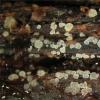
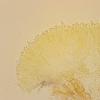
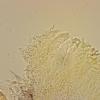
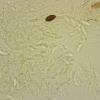
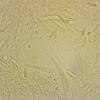
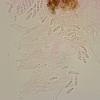
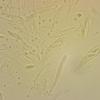
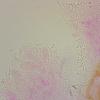
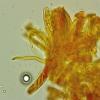
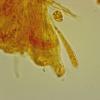
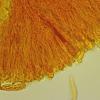
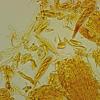
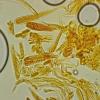
 Raitviir-2004-synopsis-1-0001.jpg
Raitviir-2004-synopsis-1-0001.jpg